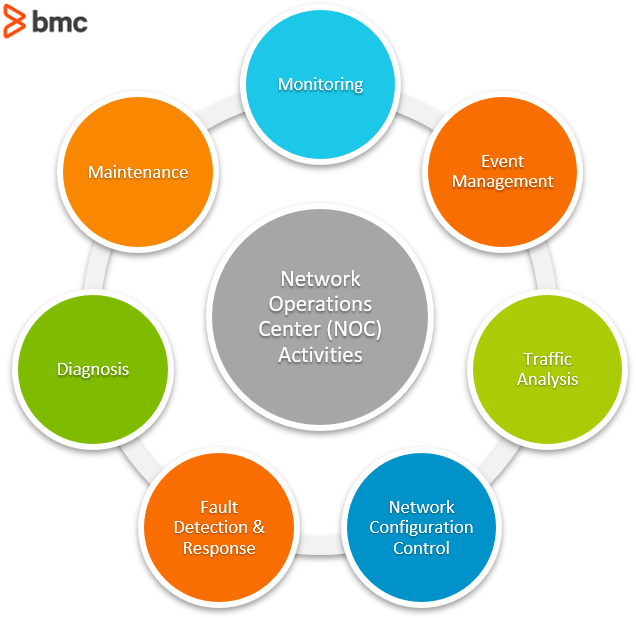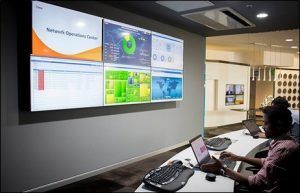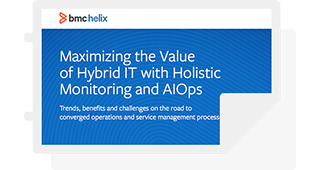The Network Operations Center (NOC): How NOCs Work
In ITIC’s 11th annual Hourly Cost of Downtime Survey, published in 2020, 40% of enterprise respondents estimated that an hour’s downtime cost their organizations $1-5 million dollars in lost revenue, end user productivity, and remedial action by IT administrators.
And that $1-5 million does not consider legal fees, fines, or penalties.
From a user perspective, uptime and performance are key determinants of service quality. That’s why service providers require high levels of visibility on components, configurations, and dependencies that can indicate service status and issues.
The Network Operations Center (NOC) is one such capability that organizations can deploy in order to support this need.
Mục Lục
What is the NOC?
Short for network operations center, the NOC (pronounced “knock”) refers to a centralized location where 24/7 monitoring and management of events affecting technology services and infrastructure takes place.
This location can be managed by you—the direct service provider—or to an outsourced third party.
NOCs were first originated in the late 1970s by telecommunication service providers (thus the ‘network’ name) for displaying the status of switches, routing, and circuits.
Today’s NOC is not only restricted to monitoring networking equipment (e.g. routers, switches, servers), but also cloud, power, environmental, and service aspects such as:
- Transactions
- Traffic
- User patterns
Here, the term ‘operations’ refers to the delivery and support of:
- Live services
- Services about to be deployed
So, it’s not so much about the development side of things, though the NOC might monitor the overall development environment since it is a “live service” for developers.

What happens at the NOC?
In terms of activities at the NOC, the two main jobs are monitoring and event management.
Other activities at the NOC include:
- Traffic analysis
- Network configuration control
- Fault detection and response
- Diagnosis
- Maintenance
Some NOCs are also used for monitoring security events, though some practitioners advocate for separation using a Security Operations Centre (SOC) due to confidentiality concerns.
Monitoring
According to the ITIL® 4 Practice Guides, monitoring focuses on:
- Detecting conditions of potential significance in configuration items
- Tracking and recording their state
- Providing this information to relevant parties
Event management
On the other hand, event management focuses on those monitored changes of state defined by the organization as an event, determining their significance, and identifying and initiating the correct response to them.
Information about events is also recorded, stored, and provided to relevant parties.
Additional service management practices
Monitoring and event management activities are key inputs to other service management practices where visibility, uptime, and performance are critical such as:
Who works in a NOC?
The NOC engineer is a frontline staff who is expected to:
- Know how things work
- Be able to pinpoint where issues are coming from, using both experience and analysis
The scope of a NOC engineer’s job can be quite wide depending on the service provider’s service offerings and infrastructure layout. Some organizations also assign backup and patch management activities to NOC staff.
(Learn more about what NOC engineers do.)

What’s inside a NOC?
Being the mission control for a service provider, screens are the hallmark of any NOC. Due to your centralized location, you likely have both:
- Large screens, such as video walls, for sharing key indicators like traffic and node status.
- Smaller monitors, usually part of an operator’s desk console, for viewing specific elements.
More often than not, the main screens show outputs from a centralized monitoring system that gathers, synthesizes, and correlates data from numerous sources—hence the need for visibility by a large number of people.
The operator desks display actual event information including:
- Alarm status
- Source
- Time
- Other relevant data
So, the screens are the main feature on the walls. Then you have the operator desks and other capabilities that would be required, including:
- Telephones for contacting relevant field/specialist support staff and third parties
- Computers with office software for email, collaboration tools, and reporting tools
- Service management software tools for logging and escalating significant events
- Software tools for remote access into and troubleshooting affected elements
- Knowledge bases for referencing system information and troubleshooting guides
- Television screens displaying news, social media feeds, and other relevant information sources
Designing a NOC
When it comes to setting up a NOC, it is important to consider both people and environment.
The people aspects will include:
- Ergonomic office furniture and IT equipment to support NOC engineers during their shifts
- Spacious design to allow air flow, comfort, easy mobility (due to the need to gather at screens to discuss what’s going on)
- Adjoining break rooms with kitchen facilities as NOC engineers are expected to stay near the NOC during their breaks
The environment aspects will include:
- Layouts that allow for unhindered viewing of the larger wall screens across the NOC
- Quadrants that separate specialist NOC teams monitoring designated elements
- Redundancy for power and connectivity to ensure unhindered 24/7/365 operations
- Scalability to support future growth needs for people, equipment, stations, and screens
Due to its critical nature, the design, implementation, and operation of the NOC cannot be left to chance. The input of all stakeholders—especially the NOC engineers—is crucial in ensuring that the NOC achieves the key objectives of the service provider: availability and performance of its technology services and systems.
Related reading
Simplify hybrid IT monitoring and event management


By integrating ITSM and ITOM data into a single view, you can overcome the friction and fragmentation created by hybrid IT. Download now › ›
These postings are my own and do not necessarily represent BMC’s position, strategies, or opinion.
See an error or have a suggestion? Please let us know by emailing [email protected].















![Toni Kroos là ai? [ sự thật về tiểu sử đầy đủ Toni Kroos ]](https://evbn.org/wp-content/uploads/New-Project-6635-1671934592.jpg)


